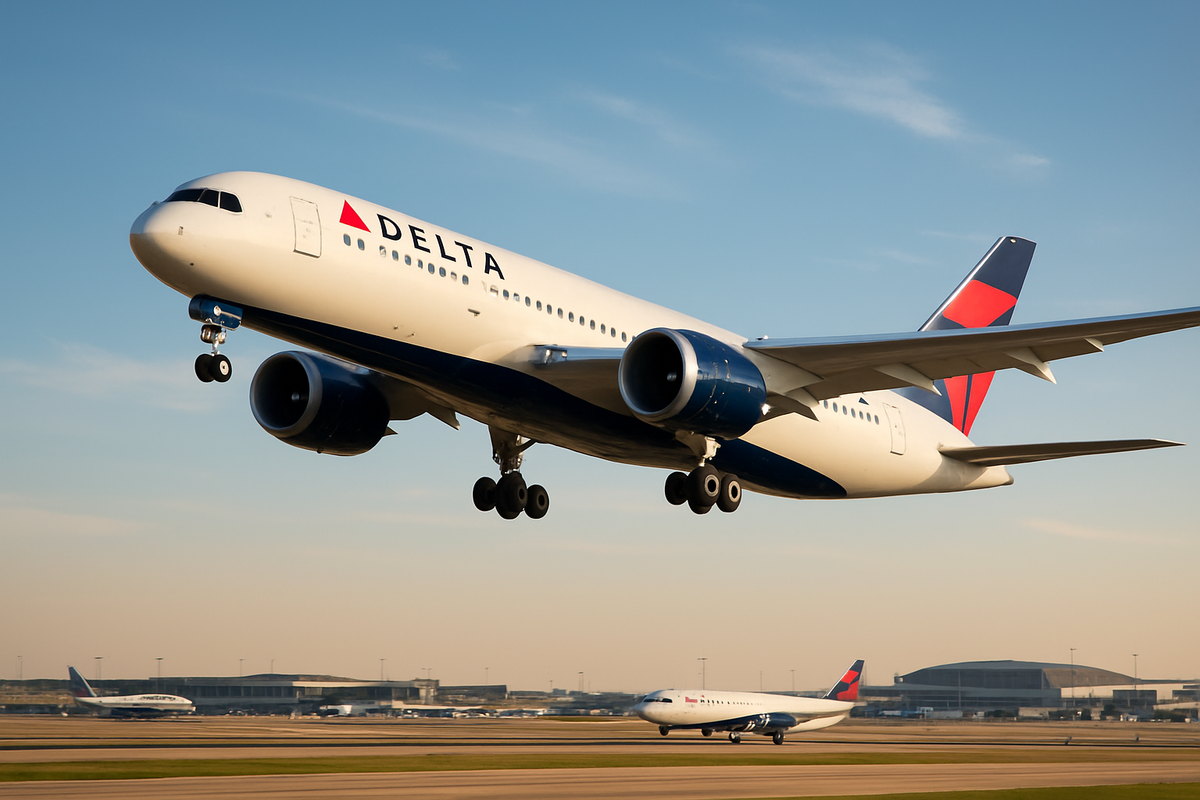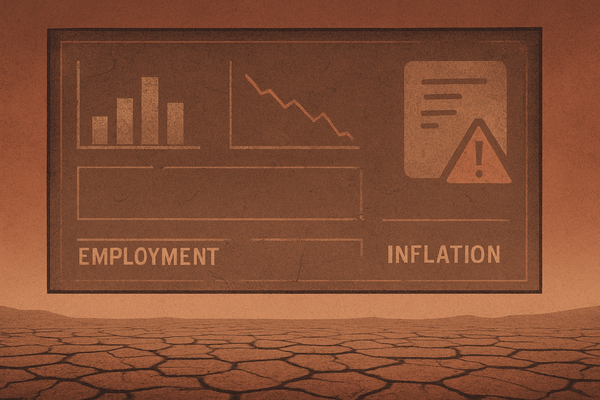Delta Airlines Soars Amidst Government Shutdown Resolution Hopes, Signaling Broader Airline Recovery

Atlanta, GA – November 12, 2025 – Delta Air Lines (NYSE: DAL) emerged as a standout performer in the financial markets today, witnessing a significant surge in its stock price as optimism mounted over the imminent end of a protracted U.S. government shutdown. The airline's robust performance, with shares climbing over 4% to 5%, signals not only its intrinsic resilience but also provides a much-needed beacon of hope for a broader airline industry battered by weeks of operational chaos and financial strain. This positive movement suggests investors are confident in Delta's ability to navigate turbulence and capitalize on a rebound in travel demand once federal services normalize.
The immediate catalyst for Delta's ascent, and indeed for the entire airline sector, was the strong indication that the U.S. government shutdown, now in its 43rd day, was nearing its conclusion. The U.S. Senate had approved a compromise funding package, with a crucial vote pending in the House of Representatives later today. The anticipated resolution is expected to alleviate severe disruptions caused by staffing shortages at the Federal Aviation Administration (FAA) and Transportation Security Administration (TSA), paving the way for a return to normal flight operations and a resurgence in travel spending.
Unpacking the Shutdown's Impact and Delta's Resilience
The U.S. government shutdown, which commenced on October 1, 2025, has been the longest in the nation's history, inflicting widespread damage across various sectors, particularly aviation. The airline industry has been grappling with severe operational and financial strain due to the impasse. The FAA, operating with underpaid or absent staff, mandated airlines to significantly scale back domestic flight schedules, with cuts expected to reach 10% by November 14. This led to approximately 9,500 flight cancellations between November 7 and November 12, causing long delays at major airports and affecting millions of passengers. Air traffic controllers and TSA agents, deemed essential, have been working without compensation, leading to increased absenteeism and mounting safety concerns. The industry faced estimated daily revenue losses ranging from $10 million to $45 million, with the broader travel economy losing billions weekly.
Amidst this turmoil, Delta Air Lines (NYSE: DAL) has demonstrated remarkable resilience. On November 12, 2025, its stock gained $2.71, a 4.69% increase, with trading volume exceeding 7.2 million shares. While Delta's CEO, Ed Bastian, acknowledged that the government-mandated flight cuts, including 2,500 cancellations in the past week, would incur "significant" costs, he expressed unwavering confidence that these disruptions would not "wipe out" Delta's quarterly profits. This optimism was rooted in sturdy travel demand and strong cash flow, with expectations for a robust fourth quarter and holiday season once normalcy resumes. Delta's Q3 2025 results further underscore its financial fortitude, reporting $15.2 billion in adjusted revenue, driven by strong premium cabin demand and disciplined cost management. The market's positive reaction today reflects a belief in Delta's operational agility and its ability to weather external shocks better than many peers.
The timeline leading to the anticipated end of the shutdown saw the Senate approve a spending bill on November 10, followed by the House Rules Committee advancing the bill on November 12, setting the stage for a full House vote later that evening. President Donald Trump has indicated he will sign the bill, which would extend funding for most government agencies until January 30, 2026. This legislative progress, though delayed, provided the crucial signal that sparked today's market rally.
Winners and Losers in the Wake of Recovery
The resolution of the government shutdown, coupled with Delta's strong performance, is set to redefine the competitive landscape within the travel industry.
Potential Winners:
- Other Major U.S. Airlines: Carriers like United Airlines Holdings (NASDAQ: UAL), American Airlines Group (NASDAQ: AAL), Southwest Airlines (NYSE: LUV), Alaska Air Group (NYSE: ALK), and JetBlue Airways (NASDAQ: JBLU) are poised for significant gains. The lifting of FAA flight restrictions and the stabilization of air traffic control services will allow them to resume full flight schedules and capture renewed travel demand. Larger carriers, in particular, are generally better equipped to absorb initial disruptions and recover faster.
- Aerospace and Defense Manufacturers & Suppliers: A stable and recovering airline industry, spearheaded by strong players like Delta, will likely lead to increased confidence for new aircraft orders. Companies such as Boeing (NYSE: BA) and Airbus (EPA: AIR) stand to benefit from accelerating fulfillment of their record-high backlogs. Suppliers of aircraft parts and maintenance services, including TransDigm Group (NYSE: TDG), Honeywell International (NASDAQ: HON), Spirit AeroSystems Holdings (NYSE: SPR), and AAR Corp. (NYSE: AIR), will see higher demand as flight activity surges and the global fleet continues to age.
- Online Travel Agencies (OTAs) & Booking Platforms: Companies like Booking Holdings (NASDAQ: BKNG), Expedia Group (NASDAQ: EXPE), TripAdvisor (NASDAQ: TRIP), and Airbnb (NASDAQ: ABNB) are direct beneficiaries of increased travel demand. A surge in flight, hotel, and vacation rental bookings will drive their revenue.
- Hospitality and Ground Transportation: Hotel chains such as Marriott International (NASDAQ: MAR), Hilton Worldwide (NYSE: HLT), and Hyatt Hotels (NYSE: H), along with car rental companies like Avis Budget Group (NASDAQ: CAR), will experience higher occupancy rates and increased demand as leisure and business travel rebounds.
- Payment Networks: A general increase in travel and consumer spending, amplified by Delta's strong credit card partnerships (e.g., American Express (NYSE: AXP)), will boost transaction volumes for companies like Visa (NYSE: V) and Mastercard (NYSE: MA).
Potential Losers (or relatively less advantaged):
- Budget/Low-Cost Carriers: While benefiting from the shutdown's end, ultra-low-cost carriers such as Frontier Group Holdings (NASDAQ: ULCC), Spirit Airlines (NYSE: SAVEQ), and Allegiant Travel Company (NASDAQ: ALGT) might face intensified competition from major carriers in a rebounding market. Delta's premium focus targets a different, higher-spending customer segment, potentially leaving budget airlines to compete fiercely on price. These carriers also have less flexibility to absorb prolonged disruptions.
- Regional Airlines: Companies like SkyWest (NASDAQ: SKYW) and Mesa Air Group (NASDAQ: MESA), which primarily operate under contract for major carriers, will see their fortunes tied to the capacity decisions of their larger partners. Their growth might be more constrained compared to mainline carriers directly benefiting from increased demand.
- Federal Contractors with Lingering Impact: Some federal contractors, particularly smaller firms not guaranteed back pay, may still face residual challenges from stalled projects or administrative backlogs, impacting cash flow for a period.
Wider Significance and Industry Repercussions
The anticipated end of the government shutdown and Delta's strong showing hold profound implications for the broader airline industry, intertwining with existing trends and potentially shaping future policies.
This event underscores the inherent vulnerability of the aviation sector to political impasses. The extensive disruption caused by this shutdown, including the FAA's mandated flight cuts due to safety concerns from understaffed air traffic controllers, is likely to spur significant policy discussions. A U.S. Senate hearing on November 13, 2025, specifically on the shutdown's impact on aviation safety, could lead to calls for more stable, long-term funding mechanisms for the FAA and TSA, potentially insulating these critical agencies from future government shutdowns. There might also be policies aimed at accelerating ATC hiring and training to address chronic shortages.
Historically, government shutdowns have consistently impacted air travel. The 2018-2019 shutdown, for instance, saw a significant increase in TSA agent absences and heightened safety concerns, contributing to early retirements among air traffic controllers. This recurring pattern highlights a systemic issue that demands a permanent solution to safeguard critical infrastructure.
Beyond the immediate crisis, the industry continues to grapple with broader trends. Travel demand, despite short-term setbacks, remains robust, especially for premium cabins and corporate travel, a segment Delta (NYSE: DAL) has successfully leveraged. However, persistent labor issues, particularly the ATC shortages, will not disappear overnight and will continue to pose capacity constraints. The industry also faces ongoing supply chain bottlenecks for aircraft and parts, further limiting expansion.
Delta's proactive investments in sustainability, including fuel-efficient aircraft and a goal of net-zero emissions by 2050, position it favorably within an industry increasingly focused on environmental responsibility. However, regulatory scrutiny over Delta's use of AI-driven pricing tools highlights an emerging trend where technological advancements in airline operations will face increased government oversight, potentially leading to new regulations concerning transparency and fairness. The ripple effects extend to airline alliances and partnerships, where Delta's resilience could strengthen its position and make it a more attractive collaborator. The disruptions have also led to a surge in demand for private jet charter firms, indicating a shift in business for some aviation partners.
What Comes Next: Navigating the Recovery Path
The immediate aftermath of the government shutdown's end will be a period of intense recovery and recalibration for the airline industry. In the short term (next 3-6 months), lingering operational disruptions, flight cancellations, and delays are expected to persist for several days, if not weeks, as the FAA lifts restrictions, clears backlogs, and restabilizes air traffic control staffing. Airlines will need time to rebuild schedules, reposition aircraft, and re-roster crews. The financial strain from weeks of lost revenue will impact Q4 2025 earnings and potentially spill into early 2026. Rebuilding passenger confidence, eroded by widespread disruptions, will be crucial, especially heading into the critical holiday travel season.
Delta Air Lines (NYSE: DAL), with its strong financial health, customer-centric approach (offering penalty-free changes and refunds), and premium focus, is well-positioned for a swift recovery. Its diversified revenue streams, including the lucrative American Express (NYSE: AXP) partnership and cargo operations, provide a more resilient business model.
In the long term (next 1-5 years), the airline industry expects continued growth in passenger demand, projected to exceed pre-pandemic levels. However, capacity constraints due to aircraft delivery delays, supply chain bottlenecks, and aging fleets will persist. Rising operational costs, including wage inflation and fluctuating jet fuel prices, will remain a challenge. Airlines will continue to strategically adapt through mergers, acquisitions, and the refinement of booking strategies using AI to enhance revenue management and dynamic pricing. Technological advancements, including AI for customer service and predictive maintenance, along with biometrics for frictionless travel, will be transformative. The imperative for decarbonization through sustainable aviation fuel (SAF), electrification, and hydrogen power will drive significant investments and ecosystem-level changes. Delta's bold strategy for net-zero emissions by 2050, fleet modernization plans, and investments in technology and infrastructure position it as a potential leader in this evolving landscape.
Potential scenarios range from an optimistic swift and efficient restoration of FAA services and robust passenger demand, allowing Delta to gain market share, to a moderate scenario with lingering staffing issues and tempered profitability, or even a pessimistic scenario with protracted recovery and a significant drop in consumer confidence. Ultimately, the industry faces a future shaped by growth, innovation, consolidation, and increasing regulatory and environmental pressures.
A Comprehensive Wrap-Up: Charting the Course Ahead
The anticipated end of the U.S. government shutdown on November 12, 2025, marks a pivotal moment for the airline industry, offering a much-needed reprieve from weeks of operational turmoil and financial losses. Delta Air Lines' (NYSE: DAL) impressive stock performance today serves as a powerful indicator of investor confidence in its robust business model and its ability to navigate severe headwinds.
Key takeaways from this event include the profound vulnerability of critical national infrastructure to political impasses, the persistent challenge of air traffic control staffing shortages, and the resilience of strong carriers like Delta. While the immediate recovery will be characterized by ongoing operational adjustments and a focus on rebuilding passenger trust, the long-term outlook for the industry remains one of growth, innovation, and strategic adaptation.
Moving forward, investors should closely watch several key indicators. These include the pace of FAA's operational recovery and ATC staffing stabilization, the trajectory of passenger demand, particularly for holiday travel, and the ongoing labor negotiations across the industry. Furthermore, regulatory developments concerning aviation safety, capacity management, and the use of AI in pricing will be crucial. Delta's continued investments in sustainability, fleet modernization, and technology will be key differentiators in a competitive and evolving market. The ability of airlines to effectively manage rising operational costs and supply chain constraints will also be paramount to their financial health in the coming months and years. The events of today underscore that while external shocks can be severe, strategic resilience and adaptability are the hallmarks of success in the dynamic world of aviation.
This content is intended for informational purposes only and is not financial advice



